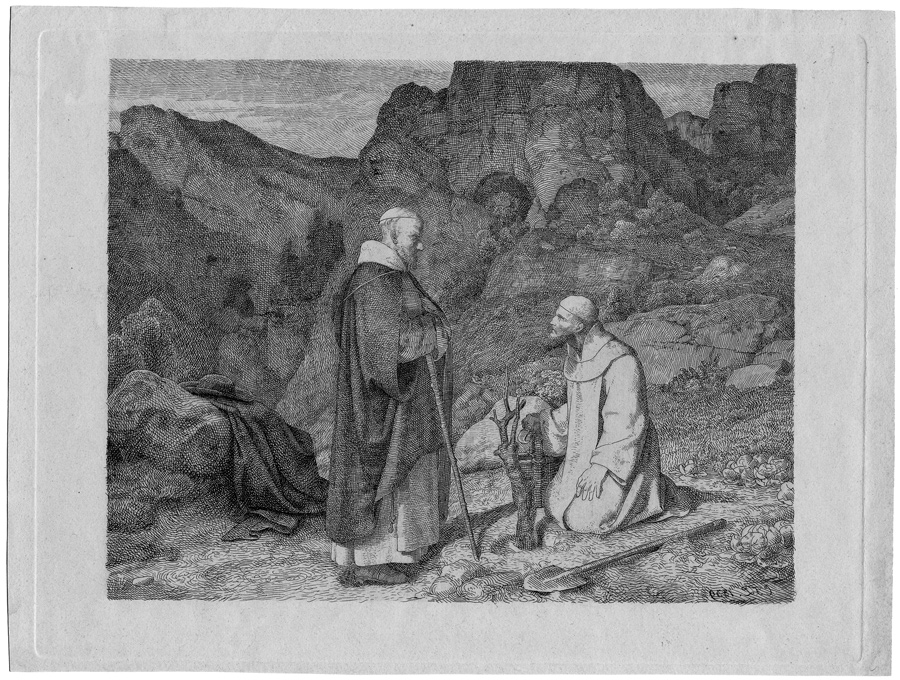Loading the page ...
Karl Friedrich Lessing
(1808 Breslau – 1880 Karlsruhe)
Two Monks (Fathers of Death) Planting a Tree in a Desolate Area. Etching on firm wove paper. 22.8 x 30 cm. 1839. Boetticher 1; Heller-Andresen 1.
Karl Friedrich Lessing is mostly known for his monumental historical paintings, which earned him a considerable reputation after he moved to Düsseldorf in 1826. Alerted to the potential of history painting by his friend, Wilhelm Schadow, Lessing subsequently became the founder of historical paintings on political themes. In the 1830s he devoted increasing attention to 15th and 16th century religious conflicts. Monumental paintings, such as the Hussite Sermon, and creations in the 1850s devoted to the life and work of Martin Luther were regarded in the intellectual climate from 1815 up to the March Revolution of 1848 as expressions of liberalism. In his early work up to 1832, however, Lessing proved to be a valid exponent of the late Romantic period, revealing signs of the inspiration he derived from Caspar David Friedrich, Carl Blechen and Karl Friedrich Schinkel. Hence Lessing showed a preference in his iconography for mediaeval monastery gardens and sacred buildings, the impact of which is heightened by the romantically atmospheric light effects.
The present, extremely rare etching stems from the early phase of the artist’s work. Lessing produced just two etchings and, indeed, this facet of his artistic work was unknown to many of his contemporaries. In his detailed article on Lessing, for example, Georg Kaspar Nagler – a stickler for accuracy – makes no mention of his printed work.
The scene with the two hermits in a barren mountain landscape exerts a compelling fascination, which is largely the result of Lessing’s perfectionist draughtsmanship. The artist is extremely economical in the artistic means he employs; his etching technique, in keeping with the theme, is restrained, bordering on the austere. The fine, regular hatching patterns permeate the work with a dense mesh of lines which realistically conveys the barrenness of the inhospitable landscape, steeping it in a soft, meditative light. The skilful use of the white paper tone effectively brings out the play of the light on the heavy habits worn by the monks and their cursorily delineated gaunt and ascetic faces.
A superb, highly nuanced impression with margins. In impeccable condition.
